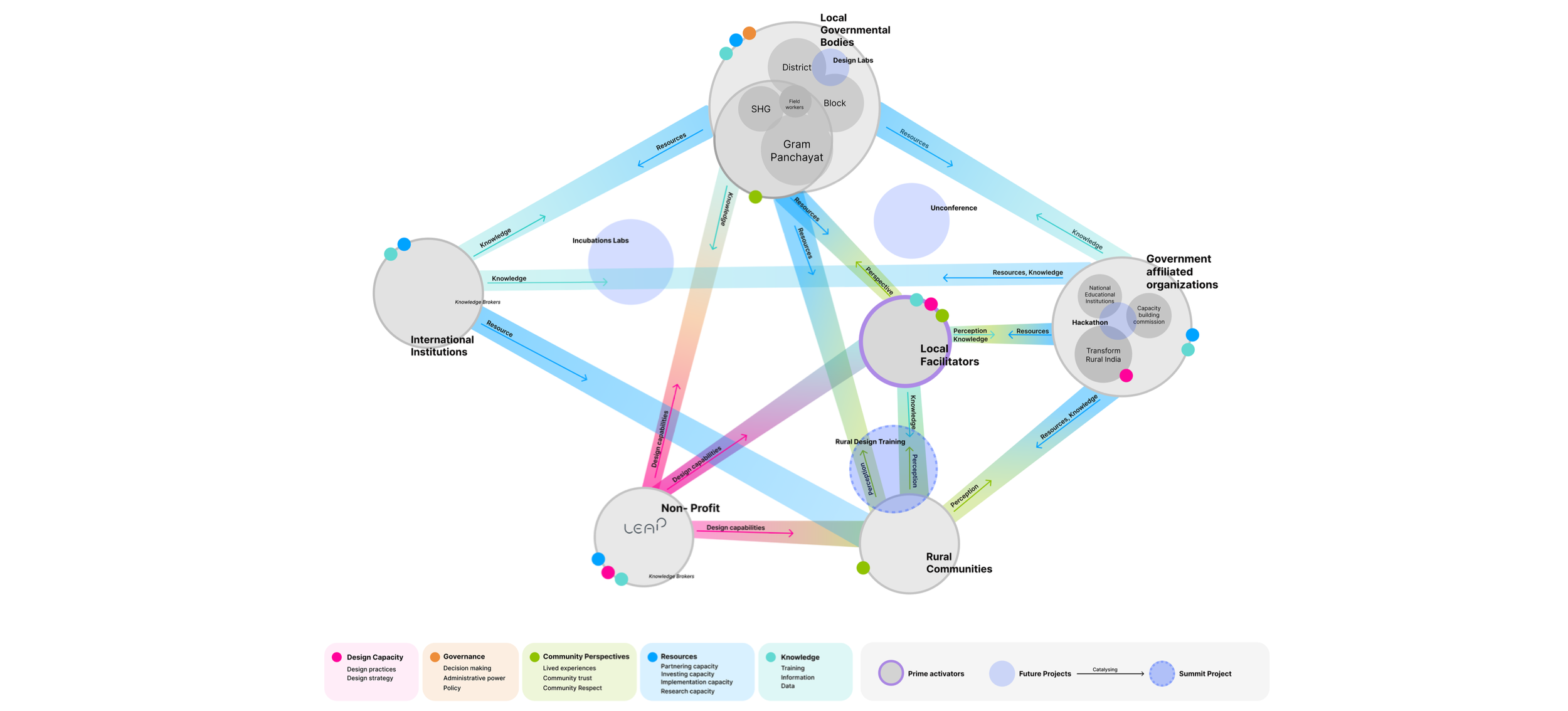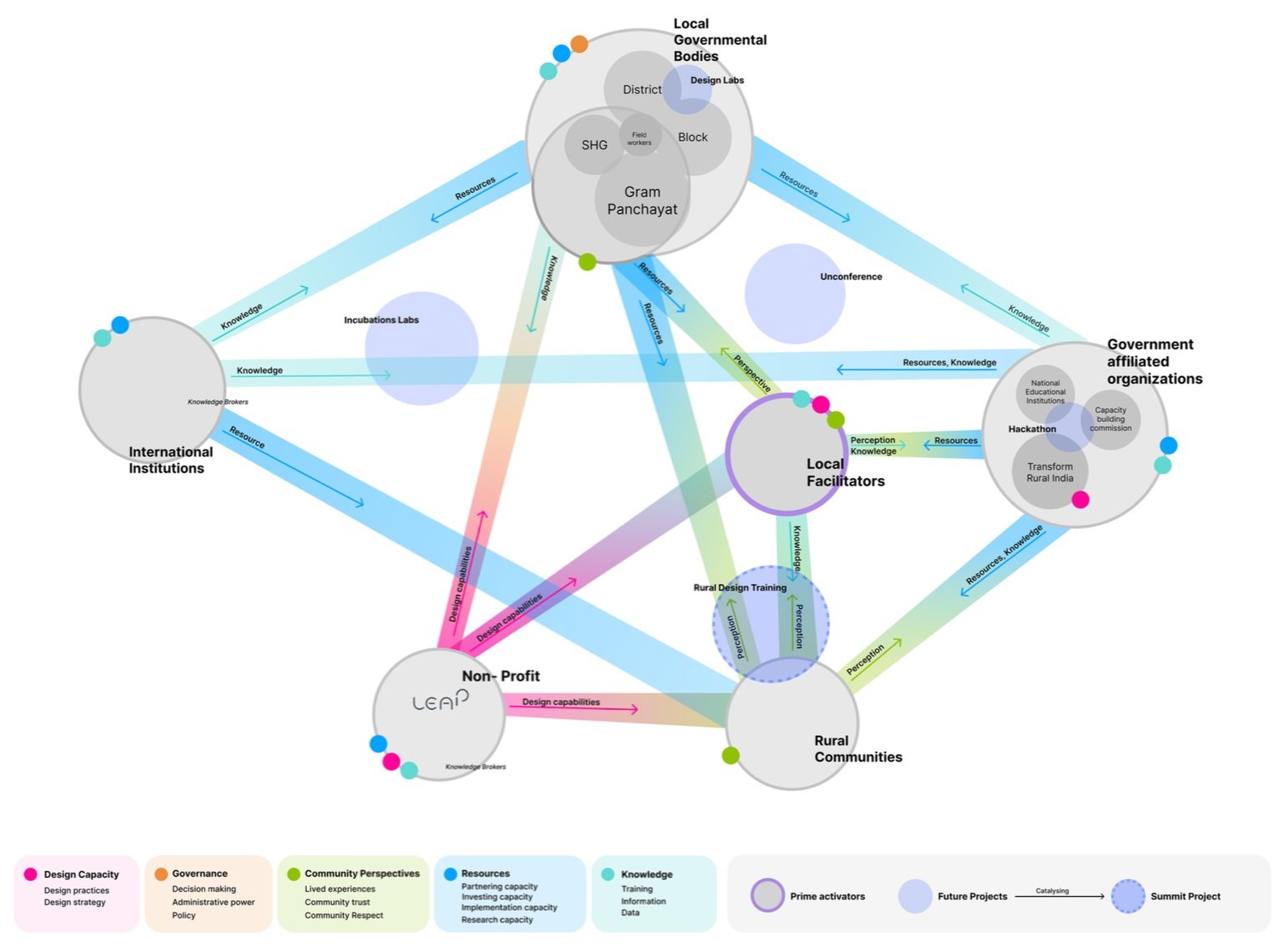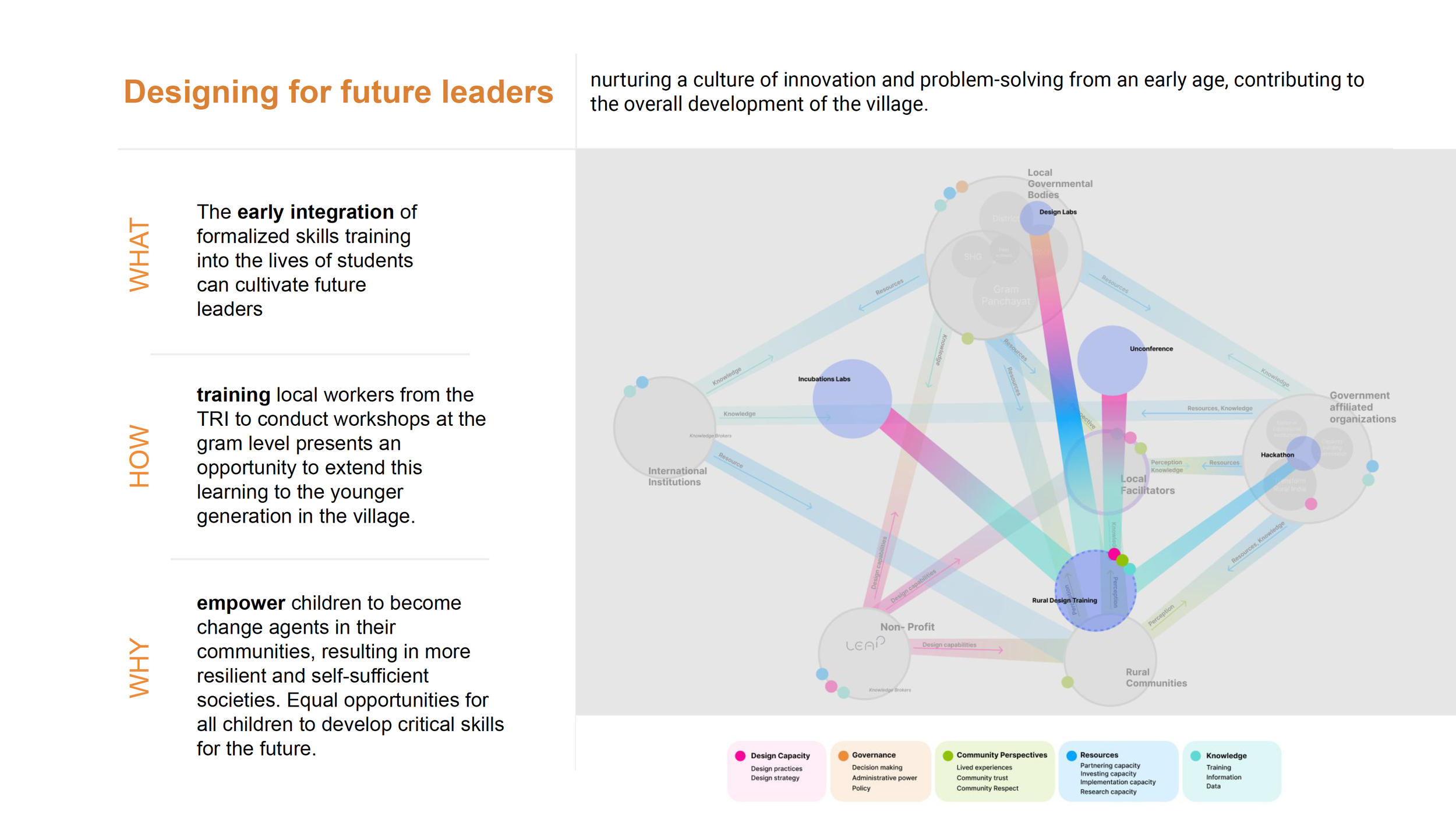
Design for Growth: Rural Livelihoods through Scaled Design Capability
How might local communities get agency and power over the developments they want?
The Collaborative Local Governance project aims to create a model to help build the capacity of local institutions to achieve shared goals.
Each with its own goals, many governing bodies in rural areas evolved in response to specific demands and opportunities to improve rural livelihood. Today, three main institutions co-exist, acting autonomously seeking to fulfill their respective missions while often serving the same population in the same context and at the same time. Panchayat Raj Institutions (PRIs) are local self-government bodies in rural areas of India established under the constitutional amendment in 1992 to decentralize power and promote grassroots democracy. PRIs consist of elected representatives who govern at the village, block, and district levels. Likewise, Cluster Level Federations refer to organizations formed by a group of Self-Help Groups (SHGs) to promote women's empowerment and socio-economic development. Lastly, block level government departments are responsible for implementing various government
schemes, policies, and programs, acting as intermediaries between higher-level government authorities and the grassroots level.
Two tensions arise as we reflect on potential challenges preventing these institutions from achieving shared goals: vertical tension and horizontal tension.
Vertical Tension: Local institutions have little agency and power to influence decision-making processes happening outside of their context, including those directly conditioning their ability to improve the quality of life in their locality.
Horizontal Tension: The second tension concerns power dynamics and representation among local stakeholders and the institutions they represent. Local institutions such as Gram Panchayats, Self-Help Groups, and Public Administration emerged and evolved to perform specific functions in the locality, working through their own processes to achieve their own goals.
The Organizational Model
The Objectives
Codify a Scalable Model
Following are our guiding questions: How might local communities get agency and power over the developments they want?
Would an institutionalized process for achieving shared goals increase their decision-making power within the systems they exist?
What if movements concerning community development became connected to those supporting community-driven, cooperative enterprises?
Would such effort strengthen and increase their power more than they would by acting on their own?
Fig 1 : The Organizational Model
ACTIVATION OF THE MODEL
Fig 2 : Design Lab
Fig 3 : Unconference
Fig 4 : Social Impact Hackathon
Fig 5 : Incubation Labs
Fig 6 : Designing for Future Leaders






